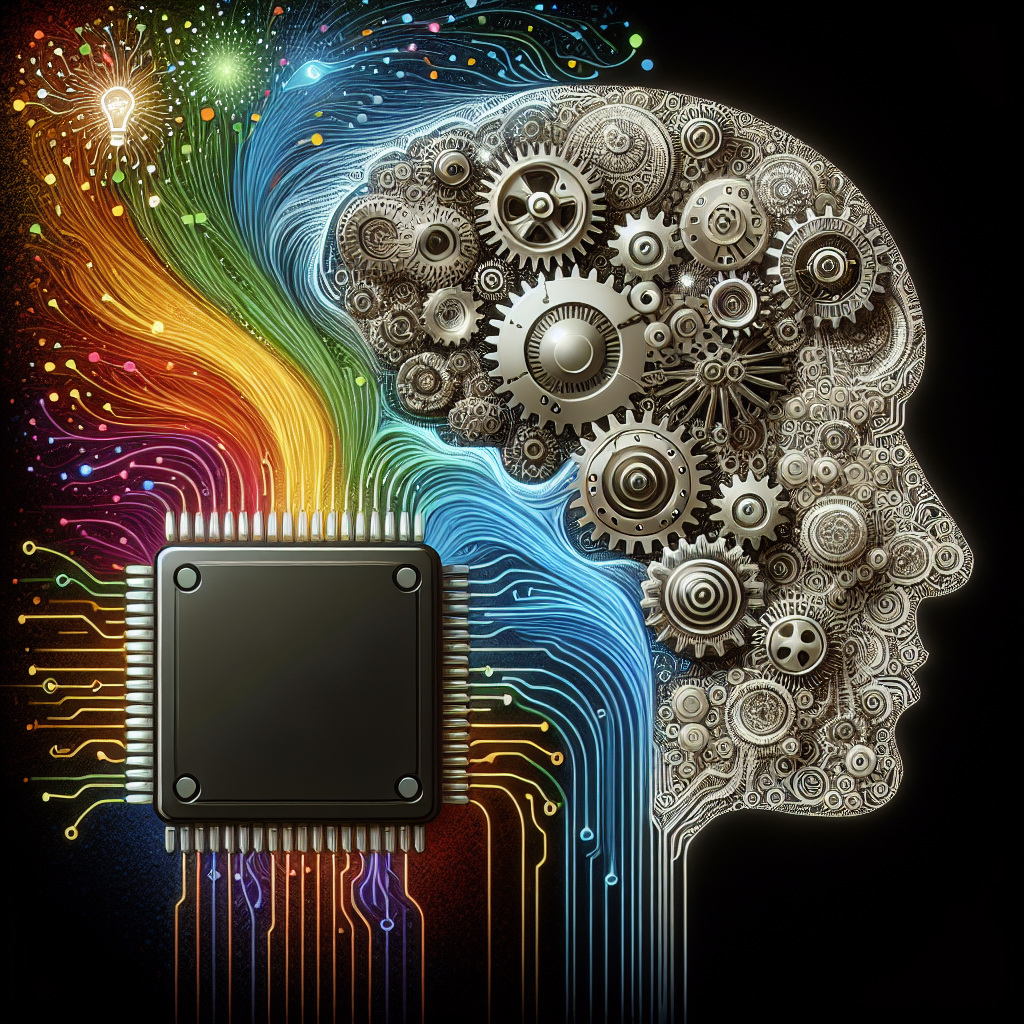Artificial Intelligence (AI) has been transforming the way we live, work, and think in recent years. From self-driving cars to virtual assistants, AI has already made a significant impact on various industries. One area that has seen a notable shift due to AI is creative thinking. In this article, we will explore the impact of AI on creative thinking and how it is shaping the future of innovation.
AI and Creativity
Creativity is often thought of as a uniquely human trait, but AI has shown that it can also be a powerful tool for fostering creativity. AI systems can analyze vast amounts of data, identify patterns, and generate new ideas and solutions. This ability to process information quickly and efficiently can help stimulate creative thinking in ways that were previously impossible.
One of the ways AI is influencing creative thinking is through the use of generative models. These models are capable of generating new content, such as images, music, and text, based on patterns and examples in existing data. For example, AI-powered platforms like DeepArt and Prisma use neural networks to transform photos into artworks inspired by famous artists. This technology allows users to explore new creative possibilities and experiment with different styles and techniques.
AI can also assist in the creative process by providing inspiration and suggestions. For instance, AI-powered writing assistants like Grammarly and Hemingway can help writers improve their writing by offering grammar and style suggestions. Similarly, AI-powered music composition tools like Amper Music can generate original music tracks based on user preferences and inputs. By automating repetitive tasks and providing feedback, AI can free up creative professionals to focus on more high-level tasks and ideas.
Furthermore, AI can enhance collaboration and teamwork in creative projects. Tools like Google’s AutoDraw, which uses AI to predict and suggest drawings as users sketch, can help facilitate communication and idea sharing among team members. AI can also analyze data from multiple sources to identify trends and insights that can inform creative decisions. By leveraging AI in collaborative settings, creatives can harness the power of collective intelligence and produce more innovative and impactful work.
Challenges and Concerns
Despite its potential benefits, AI also poses challenges and concerns for creative thinking. One of the main concerns is the fear of AI replacing human creativity. Some critics argue that AI-generated content lacks the depth, emotion, and originality that human creativity embodies. While AI can replicate existing styles and patterns, it may struggle to produce truly groundbreaking and innovative ideas that push the boundaries of creativity.
Another challenge is the ethical implications of AI in creative industries. As AI becomes more integrated into the creative process, questions arise about ownership, copyright, and attribution of AI-generated content. Who owns the rights to AI-generated art or music? How do we ensure that AI respects intellectual property and cultural sensitivities? These ethical dilemmas need to be addressed to ensure a fair and equitable creative ecosystem.
Moreover, there are concerns about bias and diversity in AI-generated content. AI systems are trained on large datasets, which may contain biases and stereotypes that can perpetuate discrimination and inequality. For example, AI-powered image recognition systems have been shown to exhibit racial and gender biases in their classifications. As AI becomes more prevalent in creative industries, it is essential to address these biases and ensure that AI promotes diversity, inclusion, and equity in creative expression.
FAQs
Q: Can AI be creative?
A: While AI can generate new ideas and content based on existing data, it is still debated whether AI can truly exhibit creativity in the same way humans do. AI lacks consciousness, emotions, and self-awareness, which are essential components of human creativity. However, AI can simulate creativity by combining and recombining existing concepts and patterns in novel ways.
Q: How can AI enhance creative thinking?
A: AI can enhance creative thinking by automating repetitive tasks, providing inspiration and suggestions, and facilitating collaboration and teamwork. AI can analyze data, identify patterns, and generate new ideas that can inspire and inform human creativity. By leveraging AI tools and technologies, creatives can explore new possibilities, experiment with different styles, and produce more innovative and impactful work.
Q: What are the ethical implications of AI in creative industries?
A: The ethical implications of AI in creative industries include concerns about ownership, copyright, attribution, bias, and diversity. As AI becomes more integrated into the creative process, questions arise about the rights and responsibilities of AI-generated content, as well as the potential biases and stereotypes embedded in AI systems. It is crucial to address these ethical dilemmas to ensure a fair and equitable creative ecosystem.
In conclusion, AI is reshaping the landscape of creative thinking by offering new tools, techniques, and opportunities for innovation. While AI has the potential to enhance creativity and foster collaboration, it also presents challenges and concerns that need to be addressed. By understanding the impact of AI on creative thinking and navigating the ethical implications, we can harness the power of AI to unlock new creative possibilities and shape the future of creativity.

